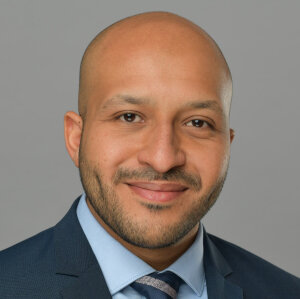
June 6-7, 2022
noiSE As SIgnal 2: Desperately seeking hEmo
- The SEASIDE Conference -
Why hemodynamics?
Although classically used to probe the hemodynamic consequences of neural activity, the measured signal in functional MRI and NIRS reflects a combination of several different modulations. Some of these are dynamic, widespread signals reflecting the influence of many physiological processes. The presence of these hemodynamic signals, which are ubiquitous in BOLD-based functional MRI data, has substantial methodological implications for the conduct and interpretation of functional MRI experiments.
In particular, the relative time lags of propagating hemodynamic signals as they traverse the brain parenchyma reflect cerebral perfusion and hemodynamics. Moreover, hemodynamic lags have found a practical application as a non-invasive measure of blood flow in cerebrovascular disease patients. This educational symposium will start with the basics of cerebrovascular physiology, anatomy, and imaging. It will then address the topic of hemodynamics-related low frequency oscillations, the techniques by which they are measured, and the challenges and opportunities that they present for neuroimaging as both a research and clinical tool.
Program
Full program here.
Code of conduct here.
DAY 1 - Monday, June 6th 2022
Session 1 - LFOs: Methods and Characteristics - Moderator: Tom Liu
13:00 to 16:00 UTC
13:00 - 13:30 Opening
13:30 - 14:00 Large scale spatiotemporal patterns of hemodynamics
Shella Keilholz
14:00 - 14:30 Multimodal study of global low frequency (<0.1 Hz) brain dynamics in resting state
Xiao Liu
14:30 - 15:00 Origins of LFOs-Deciphering the vascular and cellular contribution to LFOs and correlation patterns to pupil dynamics
Xin Yu
15:00 - 15:30 The brain's monitoring of the stomach modulates spontaneous brain activity
Ignacio Rebollo
15:30-16:00 Group discussion
Session 2 - LFOs: Driving Forces and Mechanism? - Moderator: Molly Bright
19:00 to 22:00 UTC
19:00 - 20:00 Keynote 1
Imaging fast hemodynamics and fluid flow with fast fMRI
Laura Lewis
20:00 - 20:30 Brain fluid pulsations during sleep and wake
Pinar Özbay
20:30 - 21:00 Vagal influences on fMRI activity
Zhongming Liu
21:00 - 21:30 The impact of respiratory induced signal variance on brain-behavior correlations
Immanuel Elbau
21:30 - 22:00 Group discussion
DAY 2 - Tuesday, June 7th 2022
Session 1 - Clinical applications - Moderator: Jean Chen
13:00 to 16:00 UTC
13:00 - 14:00 Keynote 2
Cerebral perfusion imaging with ASL: Ready for clinical primetime
Divya Bolar
14:00 - 14:30 Cerebral perfusion pressure influences on neurovascular coupling
Jana Kainerstorfer
14:30 - 15:00 Measuring cerebral autoregulatory responses with fMRI
Kevin Murphy
15:00 - 15:30 Impact of acute intermittent hypoxia on BOLD fMRI measures of cerebrovascular reactivity
Molly Bright
15:30 - 16:00 Group discussion
Session 2 - New methods for investigating vascular dynamics - Moderator: Ben Inglis
19:00 to 21:30 UTC
19:00 - 19:30 Physiological brain pulsations in sleep
Vesa Kiviniemi
19:30 - 20:00 Multiscale neuro-vascular imaging and modeling in the mouse
MIchèle Desjardins
20:00 - 20:30 Hypoxia-induced deoxyhemoglobin: a contrast agent for cerebral perfusion imaging
Olivia Sobczyk
20:30 - 21:00 Advancing fMRI acquisition through Echoplanar Time Resolved Imaging (EPTI)
Fuyixue Wang
21:00 - 21:30 Group discussion
Organizers
Dr. Ahmed Khalil
Charité Universitätsmedizin Berlin
Dr. Sinem Erdogan
Acibadem Mehmet Ali Aydinlar University
Dr. Blaise Frederick
McLean Hospital
Dr. Lia Hocke & Mr. Branick
McLean Hospital
Dr. Ben Inglis
UC Berkeley
Dr. Tom Liu
UCSD
Dr. Ioannis Pappas
USC
Dr. Yunjie Tong
Purdue University
Dr. Hemo Deinamics
S.O.H.K.
How much does the symposium cost ?
Participation in the symposium is free. However we ask you to only register if you believe you will be attending, due to the limited number allowed on the Zoom. If you want you are also welcome to donate.
When do I get the Zoom link?
The Zoom link will be sent to you shortly before the first day of the symposium. Please do not share the link.
How can I ask questions about the talks?
You can post your questions to the Zoom Q&A or to the Slack channel (see above) during the talks as well as during the discussion sessions. The questions will be collected by the moderators and posed to the speakers.
Will the talks be uploaded?
Most, but not all the talks will be uploaded after the conference concludes and will be available via a link on this website.











